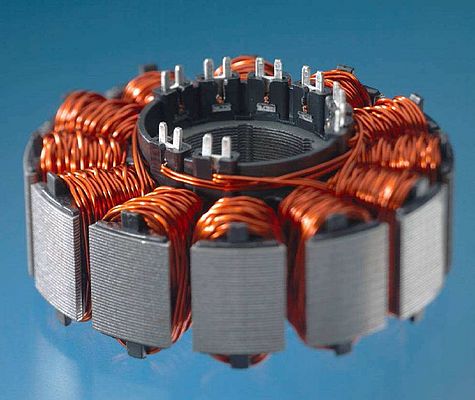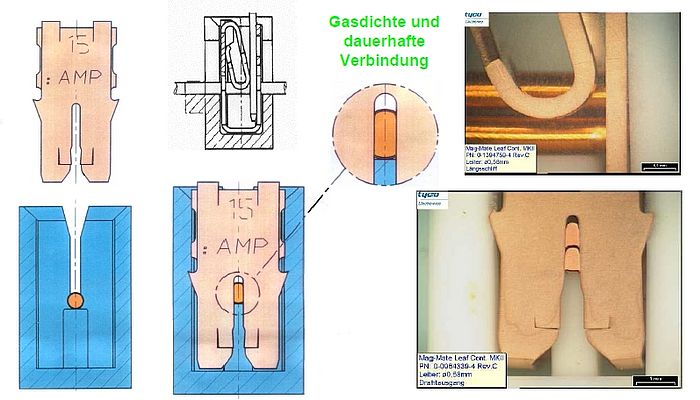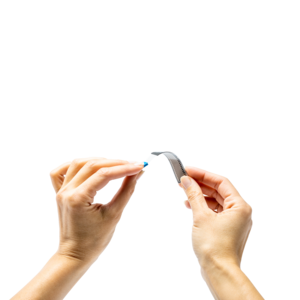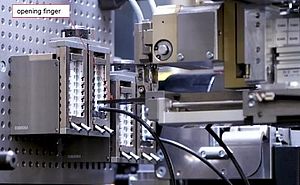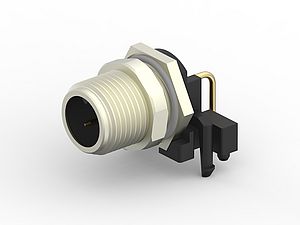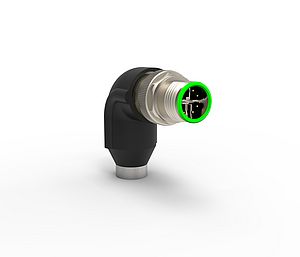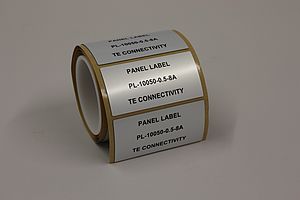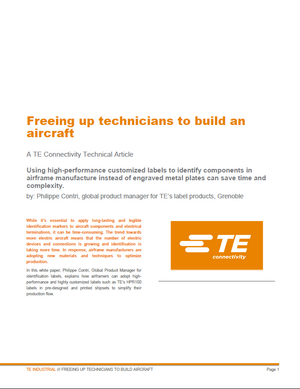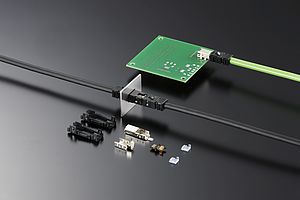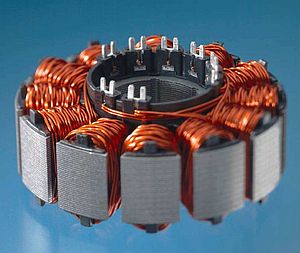IDC technology is a fast, economic and highly reliable way of terminating magnet wire. The speedy process ensures gas-tight and durable electric contacts - plus IDC termination has a reduced environmental impact. TE Connectivity's MAG-MATE product range adds another benefit to the list: It can also be used with aluminum magnet wire.
Manufacturers of fractional horse power electric motors and pumps all over the globe face quite a list of challenges: While the price competition is generally hard, products have to be extremely reliable to protect OEMs against warranty problems. At the same time pumps and motors need to be manufactured with a minimum environmental impact. In addition, they also need to be compact and light-weight for many applications, so there are several hurdles that need to be overcome. One hurdle high up on that list is terminating magnet wires. In many cases this is still done the traditional way by sonic welding or soldering. However, although both processes may meet some of the current challenges, they can also cause problems with others.
The good news is: There is an interconnection technology that addresses all the above issues. The answer is provided by Insulation Displacement Connection, or IDC for short. Its application is an international trend in full swing: Many manufacturers of pumps and motors are already using IDC-based MAG-MATE interconnection solutions to speed up the termination of magnet wires and address reliability issues. TE Connectivity (formerly Tyco Electronics/AMP) has been successfully driving the application of this technology to magnet wire for over 30 years and is continually widening the scope of medium to high-volume applications. The long-term experience from this time span is that once a customer has moved over one application to IDC, all the production gets eventually moved over.
Among the large number of MAG-MATE interconnection solutions customers there are leading manufacturers of vacuum cleaners, motors and pumps, drain and heating pumps, HVAC motors, automotive solenoids, and many more. The rationale behind making the switch to IDC technology is usually the need to increase efficiency and quality, bring down cost and address environmental issues. Sometimes the switch to MAG-MATE interconnection solutions is simply owed to growth. When a motor or pump supplier increases its manufacturing quantity, the initial wire termination process can turn into a bottleneck. As both sonic welding and soldering are manual activities, they cannot be accelerated beyond a certain point. Even worse, neither of them is a stable process that will result in a consistent interconnection quality. As a consequence, the manufacturer either runs the risk of running into quality problems, or a lot of effort has to be invested in quality inspection. Whichever path a company may choose to follow, both options are far from ideal.
Superior Interconnection Reliability
MAG-MATE interconnection solutions have proven themselves in billions of motors and pumps around the world without even a single reported incident of contact problems. This extremely high reliability over the full product lifetime is owed to the principle of termination. An IDC interconnection consists of a molded plastic cavity (≈ housing), into which the magnet wire from the bobbin is inserted, and the metal terminal that is pressed down into the cavity with an insertion tool.
To understand the properties of the interconnection it is helpful to have a quick look at some details of the termination sequence. First, the magnet wire is placed in a cavity with slots, anvil and trimming block, where the wire is supported on a straight axis. When the MAG-MATE terminal is pressed down either semi or fully automated, its stripping shoulders detach the wire's film insulation by shearing it off at four contact points. As the downward motion of the terminal continues towards its end position, the wire is pressed into the IDC slots where it is cold-worked into an oblong shape. This results in gas-tight contact areas between the flattened outer wire surfaces and the terminal. Simultaneously a post-trim blade cuts off the excess wire length and the trimming block at the front of the cavity. Once the final position of the terminal is reached, locking barbs hold it safely in place.
This fast process results in a nicely finished termination in one go - without stripping/removing, cutting, soldering or welding action. Considering that motors can easily have six, eight or more windings, all of which need to be terminated during production, the time benefit of MAG-MATE interconnection solutions becomes apparent. Additionally, there are no unwanted heat effects (e.g. over-soldering, corrosion) no RoHS (Restriction of Hazardous Substances) issues, and no need for flux. Typically the pull force of a standard MAG-MATE interconnection is 20 N, but this can be increased if required in very special cases. As a rule, though, 20 N is already far beyond what any magnet wire will ever be exposed to, considering the location and purpose of the interconnection.
Since the geometry of the plastic cavity, the terminal, tool, and wire always remain the same, the geometry of the resulting interconnection is always identical. This is a stable process with 100 percent repeat accuracy.
Standard MAG-MATE terminals are available for wire gauges between 0.18 and 2.05 millimeters. The many terminal options cover the three sizes .187, .300, and .500. For particularly compact applications mini-MAG-MATE products offer the same benefits.
IDC Wire Termination pays off
Potential customer cost savings are remarkable: In one case MAG-MATE terminals reduced the applied cost for an appliance motor interface by approx. 0.60 $. Multiplied by the company's annual production volume of around one million dryer motors, the savings totaled at 600,000 $ per year. Another drain pump manufacturer used MAG-MATE terminals to erase the need for an internal motor harness and thus reduced the cost per motor by 0.12 $, which translated into cost reductions of 480,000 $ annually for the given production volume of four million motors.
To harvest the economy of this fast (semi-)automated process the plastic cavity for the terminal needs to be designed-in to the motor or pump coil bobbin, as IDC magnet wire termination is no off-the-shelf product. TE Connectivity offers global support for this and welcomes all customer preferences from full design-in at TE Connectivity to specifications (CAD models) for in-house design at the customer's lab. For this service the connectivity solutions company provides comprehensive know-how in plastics and metal manufacturing. Among the many details this includes is the optimum choice of plastic material according to the application's temperature range.
As the tools are of great importance to ensure a repeat accurate termination, customers further benefit from TE Connectivity's full range of dedicated wire termination tools, ranging from hand insertion tools up to customer specific machines. Allowing for the development of the plastic cavity and the stamping tools for the terminals, and depending on the complexity of the application, the design-in time will typically be anywhere between three and nine months.
MAG-MATE interconnection solutions support the switch to Aluminum
Rocketing copper prices, often in combination with weight issues, cause an increasing number of companies across several industries to consider a switch to aluminum magnet wires. The potential benefits provide a strong motivation: While copper can account for 10 percent of an electric motor's cost, aluminum can bring this down to around 2 percent. At equal conductivity requirements aluminum is also half the weight of copper.
So far, the biggest single obstacle to aluminum is the interconnection technology. As the material is more brittle than copper, the termination is crucial. TE Connectivity has conducted several studies to determine whether MAG-MATE terminals can be used with Al magnet wire. The findings were that MAG-MATE terminals work perfectly well with aluminum wire as long as the wire is not over-inserted into the IDC slots and is adequately strain relieved. Given that the cavity, terminal and tool are designed to insert the wires to the proper level, the resulting gas-tight interconnection is just as reliable and durable as if using copper wire. TE Connectivity will also provide customized terminal insertion depth specifications to afford non-destructive quality monitoring for consistently reliable connections regardless of copper or aluminum. Again TE Connectivity offers full support for the design-in of MAG-MATE solutions with Aluminium wire to compensate for the creep and stress relaxation characteristics of the light-weight material. This includes the modified insertion tools for doing the job.
Contacting Magnet Wire and a Lead in one Go
Another TE Connectivity magnet wire termination product is closely related to IDC technology and has become notably successful in the automotive industry: The SIAMEZE wire termination connects a lead wire to a magnet wire in a plastic cavity. This terminal can, for instance, contact a magnet wire at the bottom IDC slot, and interconnect a solid, stranded, or bonded lead wire (with 105 °C PVC insulation) at the top. The Lead Lok terminal's locking barbs ensures full wire retention. While the geometry of SIAMEZE wire termination differs from the MAG-MATE, terminal it follows the same principle. Stripping burrs on either side of the SIAMEZE terminal pierce the lead wire during insertion at two contact points. Again the interconnection is durable because the resilience of the IDC slot's tongues ensures a permanent pre-loading of the contact points.
So despite the fact that IDC technology has been available for a long time, there is much potential for applying it to medium and large volume products. Increasing economic pressure, stricter quality requirements and the need for greener production unanimously mandate MAG-MATE solutions. It is a superior choice for the age of efficiency.



